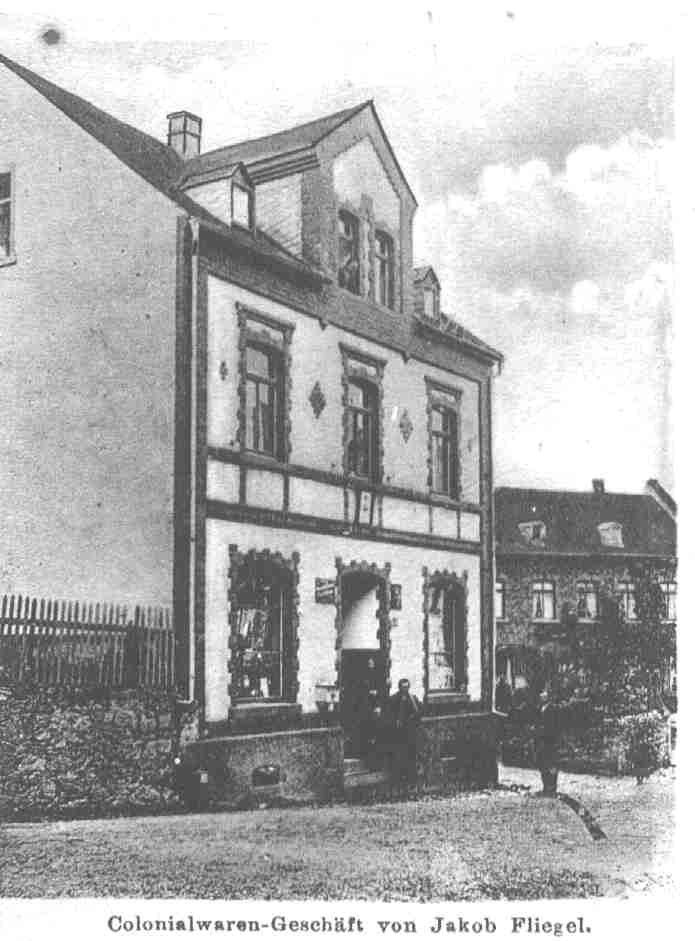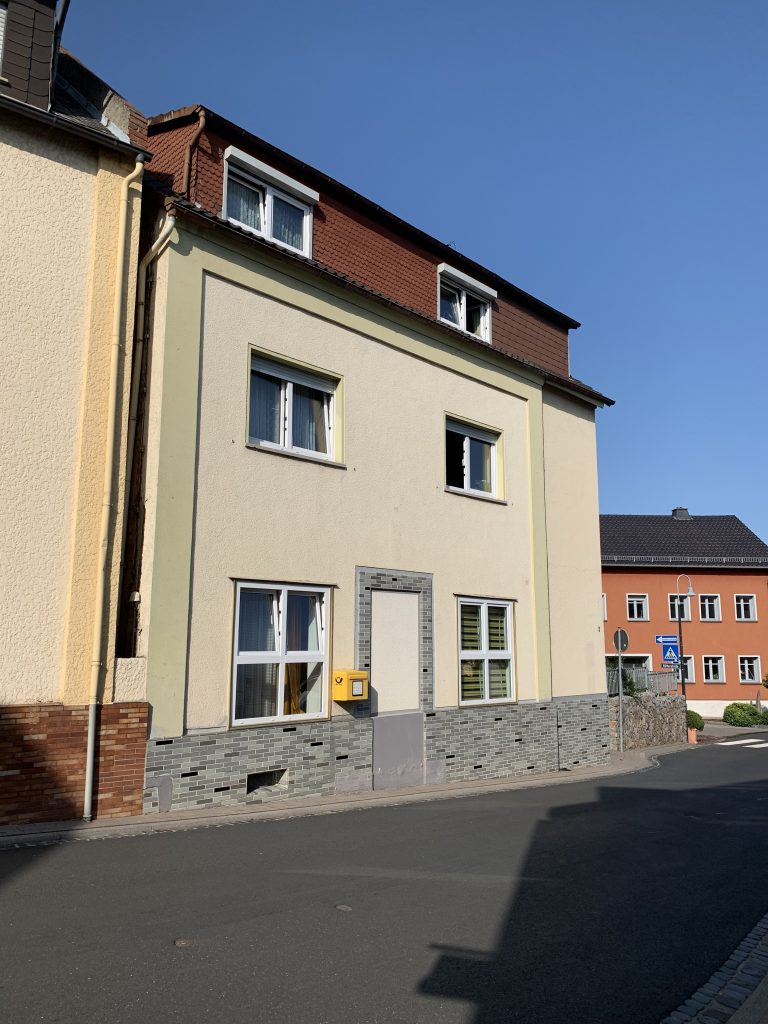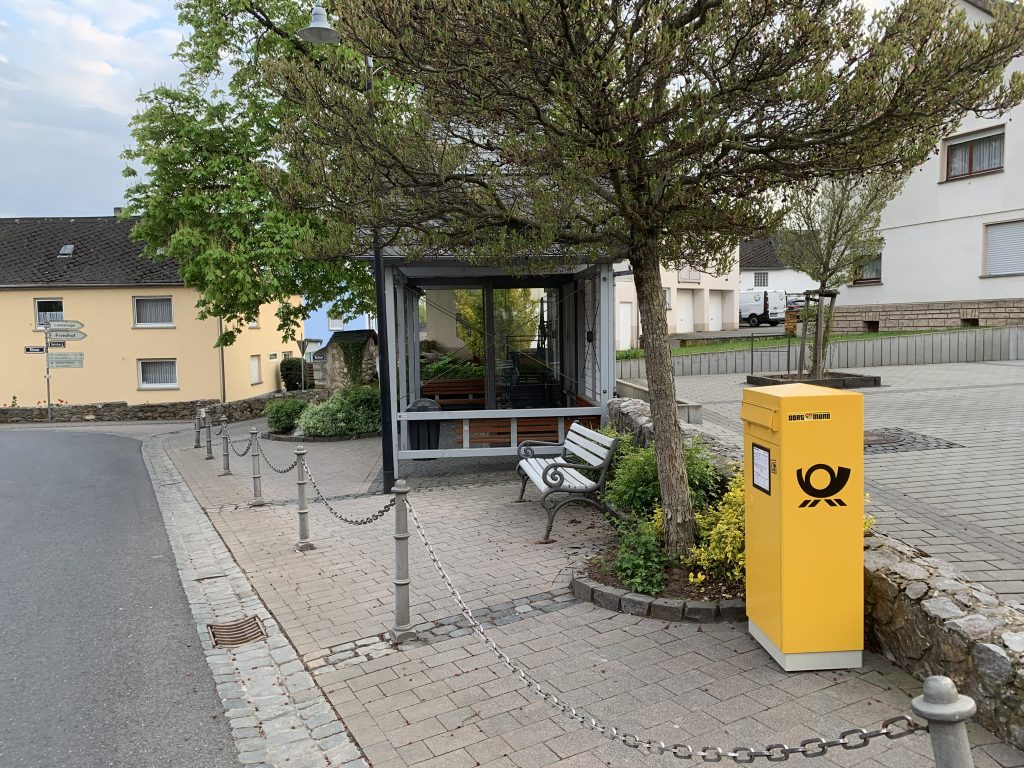What makes a village? How is a village defined?
It is ultimately a collection of houses that are more or less close together and thus form a village. In the early days, a village was often protected by impenetrable hedges, gates or later walls, but these protective structures are generally no longer present today.
This is also the case in Dietkirchen. The protective structures of the early village of Dietkirchen have long since disappeared. None of the first houses are still standing today, although there are still some older houses, some of which date back to the 16th century.
Unfortunately, some of the houses that characterized the village were demolished, especially in the 1950s and 1960s. The reason for demolition was often dilapidation or road obstruction. Today we know that it would probably have been better to renovate these houses and thereby preserve the original village character and thus the historic village image. After all, it is the houses in particular that reflect the soul of a village.
This page is an attempt to preserve some of the old houses for posterity through old pictures and their current appearance. Wherever it has been possible to obtain information about the houses, this has also been assigned to the respective houses.
The creator of this website would be pleased to receive even more old pictures from the population, which could then also be added to this page.
Please send information and contact via: webmaster@dietkirchen.info
The Ark / Lahnstrasse
One of the oldest houses still known to the older generations was “Die Arche”.
It is assumed that the name came from the fact that the house once belonged to the archdeaconry, i.e. Dietkirchen Abbey. Whether it was owned by a specific archdeacon can no longer be determined.
The last owner of the house was the Burggraf family. The picture on the left shows Mayor Friedrich Anton, who held the office of mayor from 1.12.1954 to 22.12.1964.
In the top right-hand picture, which dates from 1909, Werner Burggraf’s father can be seen on the horse.
There is information that the Arche was also the postman’s house. The post office of the Thurn- und Taxische Post existed in Dietkirchen from 1628 to 1739.
The “Wahnisch House” / Reckenforst
Another house that disappeared in the 1960s was the “Wahnisch” house on the former Backhausberg, today’s Reckenforst.
From today’s point of view, this house would also have been worth preserving and carefully renovating.
Josef Lubentius Schmidt, the brother of Eva Geis, maiden name Schmidt, lived in the house. Eva Geis is the grandmother of Peter Geis from Ludwigstrasse.
Josef Lubentius Schmidt was a wainwright with his own wainwright’s workshop and was also a part-time farmer.
The name “Wahnisch” therefore comes from the wainwright’s workshop respectively the profession of the wainwright that Mr. Schmidt ran.
According to Peter Geis, there was a very old beam with an inscription in the house or barn, but he can no longer remember it.
House Hohl / Kirchgasse
In the area of the former Finstergässchen, today’s Kirchgasse, stood the Hohl house, which unfortunately also fell victim to the pickaxe.
After the house was demolished, a tree was planted in the corner in front of the staircase to the church, to which a bench was later added.
Due to the tree growth, the branches of which spread wide across the alley, this area was appropriately given back its old name: “Finstergässchen”.
House Fliegel / Brunnenstrasse
The building housed both the Dietkirch post office and an Edeka grocery store. Both were run by the Fliegel family. The grocery store was abandoned and closed in 1972.
The picture on the right still shows the mailbox that hung to the left of the bricked-up door until mid-2021. In the meantime, a mailbox has been installed next to the lodge in the center of the village, which also contains the historic church clock.
In addition to the Fliegel family’s Edeka store, there were two other grocery stores in Dietkirchen until the late 1960s/early 1970s.
The SPAR store with attached butcher’s shop owned by the Fritz family in the town center and the VIVO store in Lahnstrasse owned by the Kremer and Jester families.
Due to competition from nearby supermarkets such as MASSA, which later became REAL and is now operated by GLOBUS, and later other supermarkets, many small stores in the villages around Limburg were no longer worthwhile and gradually closed their doors.

Early photograph of the Fliegel house in Brunnenstrasse (probably around 1900) 
Photograph of the Fliegel house in Brunnenstrasse July 2021 
Photograph of the Fliegel house in Brunnenstrasse March 2022 
The “new” mailbox in the town center / Created after dismantling the mailbox at the Fliegel house in the second half of 2021
House Nummer 7 / Untergasse
House number 7 is probably from the 17th century, possibly a little earlier. The stately courtyard building has also been preserved with its farm buildings and occupies an important corner situation at the inner village junction to the stairway to Kirchgasse and Herrenberg.

House Untergasse 7 
House Untergasse 7 – photo taken in 2006
House Bakery Schmitt / Lahnstrasse
One of Dietkirchen’s two bakers had his bakery and store here. Many Dietkirchen residents still have fond memories of “Tilde” Heine and his wife Trudel.
The second bakery was located on Brunnenstrasse. Baker Kiesewetter ran his business there. He was followed by baker Fachinger, who was then succeeded by baker Nordhofen from Dehrn after he closed his business. Nordhofen, however, “only” ran a branch store there, which has since closed.

This picture is probably from the 50s/60s of the 20th century. 
Photo from the year 2021
House Schmitt / Hohlstrasse
The house on the corner of Hohlstrasse and Geisberg is a striking building, even if it is not necessarily very old.
However, the pictures show very nicely how the appearance of a house can change considerably over the course of a few decades. Nevertheless, the basic external structure of the house remains completely intact.
House Streb / Untergasse
On the corner of Untergasse and Geisberg stands the Streb house, which has undergone a number of changes over the years, but whose basic structure is still quite original.
















